#Rainforests
Photo



Alone, but not really
#forest aesthetic#rainforests#olympic national park#old growth trees#pnw#washington state#ferns#moss#olympic peninsula#trees#wander#skokomish river valley
6K notes
·
View notes
Text
#good news#science#environmentalism#nature#environment#conservation#restoration#britain#devon#rainforests#temperate rainforest
370 notes
·
View notes
Photo
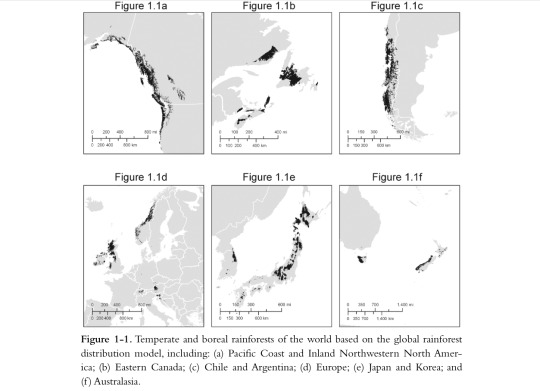
Map of temperate and boreal Rainforests in the World
135 notes
·
View notes
Text
“We have a moral obligation to try to repair the damage caused by our ancestors. In doing so, we would find that temperate rainforests are amongst our best allies in the battles we face.
To stave off the existential threat posed by the climate crisis, it’s imperative that we not only cease burning fossil fuels but also restore the natural carbon sinks that we’ve destroyed. Rampaging wildfires and killer floods show that climate breakdown is already upon us: we’ve already pumped too much carbon into the atmosphere and need to start actively removing it.
Tech entrepreneurs dream of building machines to capture carbon dioxide from the air, but they’re overlooking the ones that nature spent millions of years designing: trees.”
-Guy Shrubsole, The Lost Rainforests of Britain
97 notes
·
View notes
Text

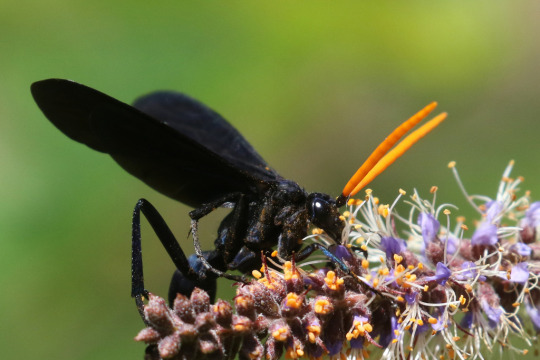
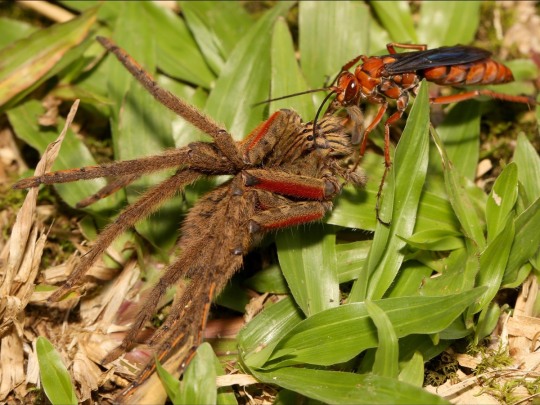
Soaring with the Tarantula Hawk Wasps
Tarantula hawk wasps, or more simply tarantula hawks, are a sub-group of the spider wasp family Pompilidae, famous for both their painful sting and their tendancy to predate exclusively on tarantulas and large spiders. The tarantula hawks encompass two genuses. Pepsis, which includes about 133 species, is found exclusively in the Americas, and occupies a range of habitats including rainforests and deserts. Hemipepsis has 180 species and is found in tropical regions on every continent.
Although tarantula hawks get their fame and their name by hunting tarantulas, only larval wasps actually feed on arachnids. The adults actually consume nectar and fermented fruit, like other hymenoptrids like bees and hornets. In fact, many species of flowers rely exclusively on pollination by tarantula hawks. The painful sting they carry is enough to keep away potential predators. In general, however individuals are not aggressive and won't utilize their defenses unless provoked. In addition, though the sting is extremely painful to humans, it is not venomous and doesn't require medical attention unless it triggers an allergic reaction.
Members of both Pepsis and Hemipepsis are active during the daytime, and spend most of their time foraging. In the summer, females will also actively hunt for prey in which to lay their eggs, while males will practice a behaviour called 'hill-topping', in which they perch on a tall flower or shrub and wait for reproductive females to pass by. Males can become defensive of their territories, but lack stingers as they have no need to hunt.
When males locate a receptive female, they engage in elaborate aerial dances to entice her to mate with them, sometimes reaching heights of over 305 m (1000 ft). After a male and female mate, they go their seperate ways; males to find another partner, and females to find a source of prey. Once a female has located a suitable tarantula, she stings it-- the venom she injects paralyses the arachnid but keeps it alive. She then drags it back to a specially prepared burrow, where she lays her egg inside the spider and covers the burrow.
The egg hatches about 3-4 days after being laid, and begins consuming its host. The sex of the larva depends on fertilization; unfertilized eggs produce males, while fertilized eggs produce females. Over the next several weeks, the larva will consume the tarantula in its entirety, keeping it alive as long as possible and going through several molts. Eventually the larva forms a pupa, and 2-3 weeks later emerges as a fully mature adult. Both sexes have fairly short lifespans: males only live for a few weeks, and females only live for 4-5 months, but in that time they will produce over 13 eggs.
Tarantula hawks are among the largest wasps in the world. The very largest can grow up to 6.5 cm (2.5 in) long, and have wingspans to match. The females' stinger is equally impressive, reaching a length of up to 12 mm (0.47 in). Species can come in a variety of colors, most commonly orange, blue, or black, with bright orange or red wings. These features, combined with the tarantula hawks' long, hooked claws and large eyes, make members of any species easily distinguishable from other wasps.
Conservation status: No species of tarantula hawk wasps is currently threatened, although many species are facing habitat destruction and a decline in their primary prey. One species of tarantula hawk, Pepsis grossa, is the official insect of the state of New Mexico in the United States.
If you like what I do, consider leaving a tip or buying me a ko-fi!
Photos
Hemipepsis ustulata by Gary McDonald
Elegant tarantula hawk wasp (Pepsis menechma) by Will Stuart via iNaturalist
Hemipepsis tamisieri by Debbie Hall
#tarantula hawk wasp#hymenoptera#Pompilidae#spider wasps#wasps#hymenoptrids#insects#arthropods#tropical fauna#tropical arthropods#rainforests#rainforest arthropods#deserts#desert arthropods#africa#north america#south america#asia#australia#europe#animal facts#biology#zoology
64 notes
·
View notes
Text
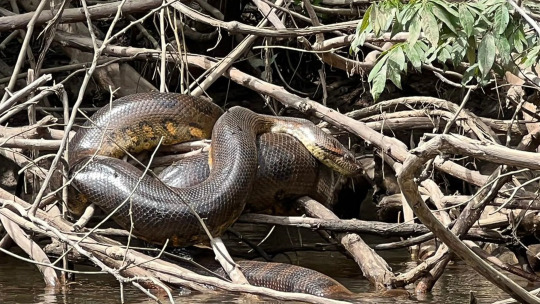
earth fact time. WAKE UP HOMIES NEW SNAKE JUST DROPPED! scientists just discovered the largest snake in the world in the amazon rainforest. the northern green anaconda is about 26 feet long and 450 pounds, and is about 5.5% genetically different than the southern green anaconda. (to put that into perspective, humans are only about 2% genetically different from chimpanzees.)
allthatsinteresting | independent | the university of queensland
#terrestrial#facts!#earthposting#reptiles#snakes#anacondas#northern green anaconda#rainforests#animals#the amazon#amazon rainforest#herpetology#scientific discovery#good news#earth fact no. 28
16 notes
·
View notes
Text
#poll blog#random polls#silly polls#stupid polls#polls#silly poll#tumblr polls#poll#nature poll#science poll#ecology#marine ecosystem#rainforests#marine biology#rainforest#ecosystem#ecosystems#biology#wildlife#natural habitat#biodiversity#zoology#amazon rainforest#marine life#biomes#science tumblr
11 notes
·
View notes
Text
29.12.2023 | Petitions for the environment and climate change.
Please read, share wherever you can, talk about them and if you can afford it, please, please, please donate - consider taking up a collection among your friends.
Actions.eko.com: Nestlé and P&G: Stop setting Indonesia’s rainforests on fire
Indonesia’s forests are burning – a thick toxic haze suffocates half of the country, keeping children out of school and forcing people and animals to relocate. But it didn’t happen by accident and we know who the arsonists are. Together, we will hold them accountable.
Nestlé and Procter & Gamble are doing business with rogue palm oil and paper producers who recklessly burn precious rainforests to the ground to expand their monocultures, steal Indigenous lands, and drive orangutans, rhinos, and elephants closer to the brink of extinction. (keep reading)
Rainforest Action Network - RAN: This one is for donating, they need 100,00$ by December 31!
We urgently need your help to fight for the world's last rainforests in 2024 by making any size donation today. Those who believe they can change the world are the ones that do. Donate now.
Help us challenge mega-corporations like Liberty Mutual, Bank of America, Procter & Gamble, Nestlé and Mondelēz. Their thirst for endless profits contributes to the widespread destruction of irreplaceable rainforests like the Leuser Ecosystem of North Sumatra and the Amazon rainforest and fuels the expansion of dangerous fossil fuel projects that choke the life out of the planet.
For a small organization, RAN's significant impact is only possible because of dedicated supporters like YOU. Your generous donation today makes a world of difference.
Rainforest Rescue: DRC: Do not sacrifice Congo's rainforests to the oil industry!
The DRC government in Kinshasa is nearing a point of no return: President Tshisekedi wants to sacrifice vast areas of Congo rainforest and peatland for oil. This would be an unmitigated disaster for the climate, biodiversity and local people. Together with our African partner organizations, we can put a stop to these plans.
The rainforests of the Congo Basin are home to millions of people and countless animal and plant species, including chimpanzees, bonobos and gorillas. They are a treasure trove of biodiversity and crucial to the fight against climate change.
Despite this, the government of the Democratic Republic of Congo (DRC) began auctioning 27 oil and 3 gas blocks in late July. The blocks cover some of the last remaining intact forests on Earth.
Three of the blocks overlap the Cuvette Centrale peatlands, which are estimated to store 30 billion tons of carbon, the equivalent to one years’ worth of global emissions. The peatlands are so vast and remote that little is known about the biodiversity at stake there. Nine oil blocks overlap protected areas.
More than half of the Congo Basin's peatlands and 60 percent of its rainforest are in the DRC, the country plays a key role in the fight against the climate crisis.
The science is clear: the governments of the world must cut carbon emissions in half within the next eight years.
In his speech at the UN's COP26 conference in Glasgow, President Tshisekedi promoted the vital role of the Congo Basin forests in regulating the global climate and his intention to enhance DRC’s energy mix by "combining several types of energy: biomass, hydro, solar." The cost of not doing so, he said, would be a climate crisis.
The world cannot afford any further expansion of oil and gas. According to the International Energy Agency (IEA), an immediate end to new investment in fossil fuel supply projects is the first step to keep global warming below 1.5°C and achieve global net zero emissions by 2050.
In an alliance of environmentalists from Africa and around the world, we want to keep the oil in the ground and the fossil fuel industry out of the Congo Basin. Please sign our joint petition!
DR Congo: Stop the destruction by miners and loggers in Tshopo!
The Democratic Republic of the Congo is home to the second largest area of rainforest on Earth. Defending it is crucial to the fight against climate change and the extinction crisis. Yet miners are polluting rivers and loggers clearing forests in Tshopo province. In the small town of Basoko, local people are fighting back.
The people of the small town of Basoko fear for their health and livelihoods: the Aruwimi River, a tributary of the Congo, has been polluted ever since the Chinese mining company Xiang Jiang Mining began dredging for gold there. Some species of fish have disappeared completely. Skin diseases are on the rise.
"We say NO to mining in Aruwimi, which is destroying our ecosystem in an anarchic way," states a memorandum to the county government read during a demonstration. On March 11, 2022, residents of the region protested on land and with boats against the trashing of their environment.
Mining is not the only threat to nature in Tshopo province: companies such as FODECO, Congo Futur and SOFORMA are reportedly logging at a breakneck pace near Basoko.
"They are systematically plundering the forests without any benefit to local people," says Jean-François Mombia Atuku, chairman of the environmental protection organization RIAO-RDC. "Anyone who demands accountability is silenced," he said, adding that workers are "kept like slaves" in the forest. "Human rights are not relevant for these companies."
The grievances regarding mining have been heard in the capital Kinshasa: In January 2022, Environment Minister Eve Bazaiba called on Xiang Jiang Mining to cease operations by February 25, 2022. However, nothing has changed since then – the company is still operating, apparently unimpressed.
"What we need now is international pressure," says Jean-François Mombia Atuku. It must be brought to bear on President Tshisekedi, who positioned his country as a heavyweight in the fight against the climate crisis during the COP26 climate conference.
It’s time to apply that international pressure – please sign our petition.
#long post#signal boost#environment#climate change#rainforests#Indonesia#Congo#Democratic Republic of Congo#donations#petitions#climate crisis#mining#Congo Basin#COP26#Glasgow COP26#defending the Earth#defending the planet#animal extinction#animal conservation#forest conservation#nature conservation#my posts
9 notes
·
View notes
Text
Temperate rainforest, which has been decimated over thousands of years, has the potential to be restored across a fifth of Great Britain, a new map reveals.
Atlantic temperate rainforest once covered most of the west coasts of Britain and Ireland, thriving in the archipelago’s wet, mild conditions, which support rainforest indicator species such as lichens, mosses and liverworts. Today, it covers less than 1% of land, having been cleared over thousands of years by humans and is only found in isolated pockets, such as the waterfalls region in the Brecon Beacons and Ausewell Wood on Dartmoor.
Two maps released by Lost Rainforests of Britain, and shared exclusively with the Guardian, show both what exists today and what could be revived in the future. The map showing the remaining fragments of rainforest in England, Wales and Scotland was compiled with the help of the public, scientists and geolocation specialists.
The second map shows that more than half of Wales and nearly all of western Scotland – as well as large parts of Cornwall, the Lake District and other pockets north of Manchester – have suitable climates for temperate rainforest.
Guy Shrubsole, an environmental campaigner who runs the Lost Rainforests of Britain campaign, said the 18,870 hectares (46,628 acres) that survive in England could double in size within a generation if they were allowed to naturally regenerate, spread by ecosystem engineers such as jays, which have been shown to support forest regrowth.
“I think the map gives a sense of hope that 20% of Britain has the right climate for temperate rainforest,” said Shrubsole. “It is highly likely that that area would have been once covered with rainforest thousands of years ago. Ultimately, I think that’s something we need to take inspiration from and look to the past to think about what we need to be bringing back in future.
“I don’t necessarily think we could cover all of the 20%. But I do think we could allow those existing fragments that we have identified to expand in size.”
The organisation commissioned a YouGov poll, which found that 93% of the British public support protecting the country’s rainforest, while 85% back its expansion and 80% think public funding should support its restoration.
Ecologists say that invasive species, pollution and grazing by livestock have damaged temperate rainforest in the UK, but substantive protection and careful tree-planting could see the rare ecosystems naturally generate.
Previous analysis by Lost Rainforests of Britain found that 73% of England’s remaining fragments of temperate rainforest are not designated as sites of special scientific interest, despite their importance for biodiversity. Shrubsole has been encouraging members of the public to help him identify and map remaining fragments of rainforest.
The RSPB, the Wildlife Trusts, the National Trust and the Woodland Trust have backed Shrubsole’s campaign, writing to the new environment secretary, Ranil Jayawardena, last month to urge him to better protect what remains and expand the rare habitat, which is also found in Chilean Patagonia, Alaska and Japan.
#Great Britain#rainforests#temperate rainforest#conservation#none in northern ireland?#there's some still in the republic of ireland
46 notes
·
View notes
Text

Forest cover map of Asia.
High resolution tree cover map based on the analysis of satellite data, with specific sensors made to detect and recognize the reflection from vegetation.
Read more and buy prints here.
Ko-fi | RedBubble | Etsy (digital prints)
#asia#forests#forest cover#tree cover#trees#maps#geography#artists on tumblr#cartography#my art#digital art#wall art#map making#rainforests#vibrant
127 notes
·
View notes
Text

A quiet audience - Quinault Rain Forest
386 notes
·
View notes
Text
48 notes
·
View notes
Photo

Three types of rainforests: Boreal, Tropical and Temperate.
611 notes
·
View notes
Text

I spend much of my time walking through the coastal rain forests of British Columbia, looking all around at the chaos, and sometimes finding just a hint of order.
www.jimroche.ca
#Jim Roche#Landscape Photography#British Columbia#Rainforests#Chaos#New Topographics#Dusselldorf School#Contemporary Landscape#Documentary Photos.
12 notes
·
View notes
Photo
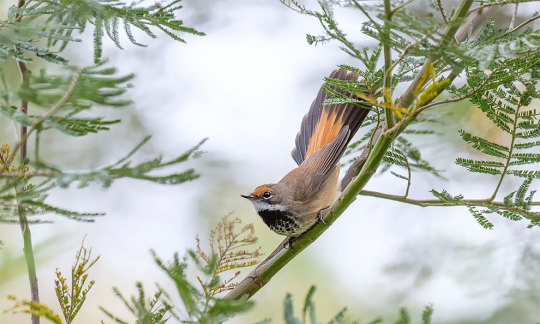
Rufous fantail.
The aerial acrobatics of the rufous fantail are a sight to behold. Occurring mostly in rainforests and wet forests, these dainty birds feed in the air ‒ diving and twisting about in a blur of colour as they catch flying insects. These restless birds are constantly on the move and in the spring they migrate to south-eastern Australia to breed, before heading back north in the cooler months. While on migration, they can appear in unexpected places like urban parks and gardens.
Photograph: Michael Fuhrer
#michael fuhrer#photographer#rufous fantail#bird photography#australia#rainforests#wet forests#nature
66 notes
·
View notes
Text
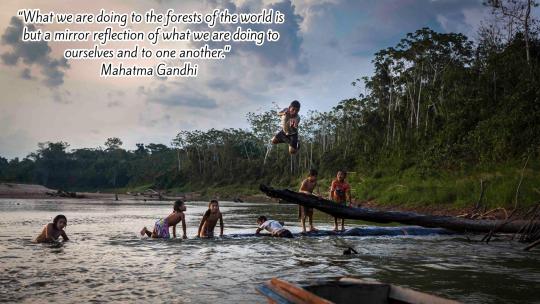
Be sure to check out the following 5 organizations and discover how you can help protect the Amazon rainforest 🌳!
➡️ Amazon Conservation Association
➡️ Amazon Conservation Team
➡️ Norway's International Climate and Forest Initiative (NICFI)
➡️ Rainforest Foundation US
➡️ Rainforest Partnership
#amazon rainforest#amazonia#rainforest#rainforests#forest#forests#jungle#brazil#brasil#south america#nature#environment#climate change#indigenous#indigenous peoples#mahatma gandhi#gandhi#quote#quotes
7 notes
·
View notes